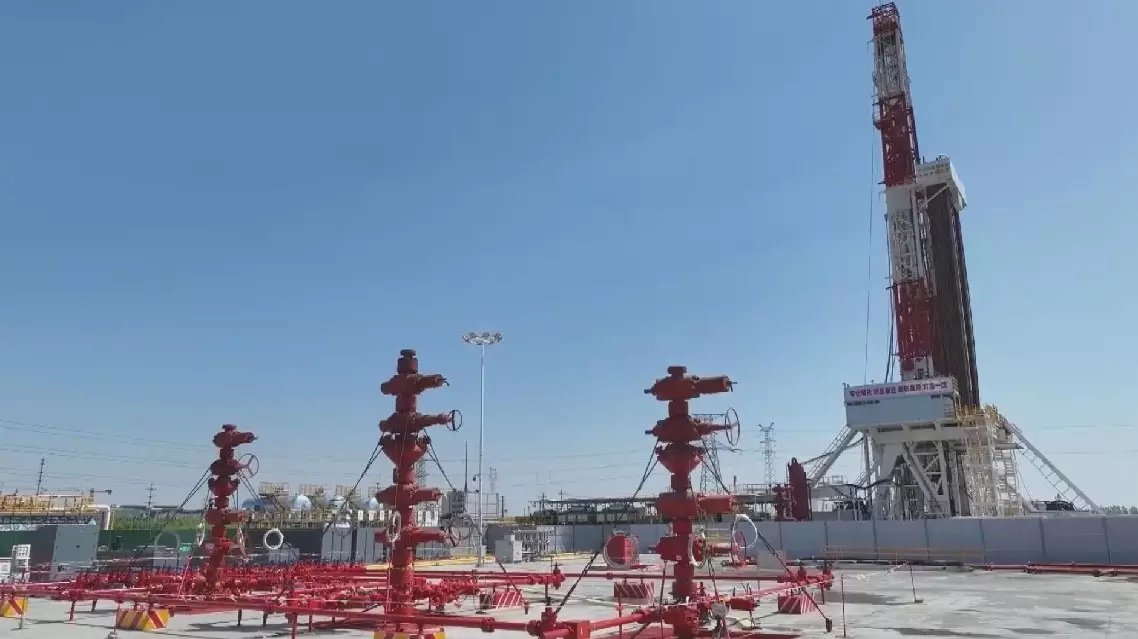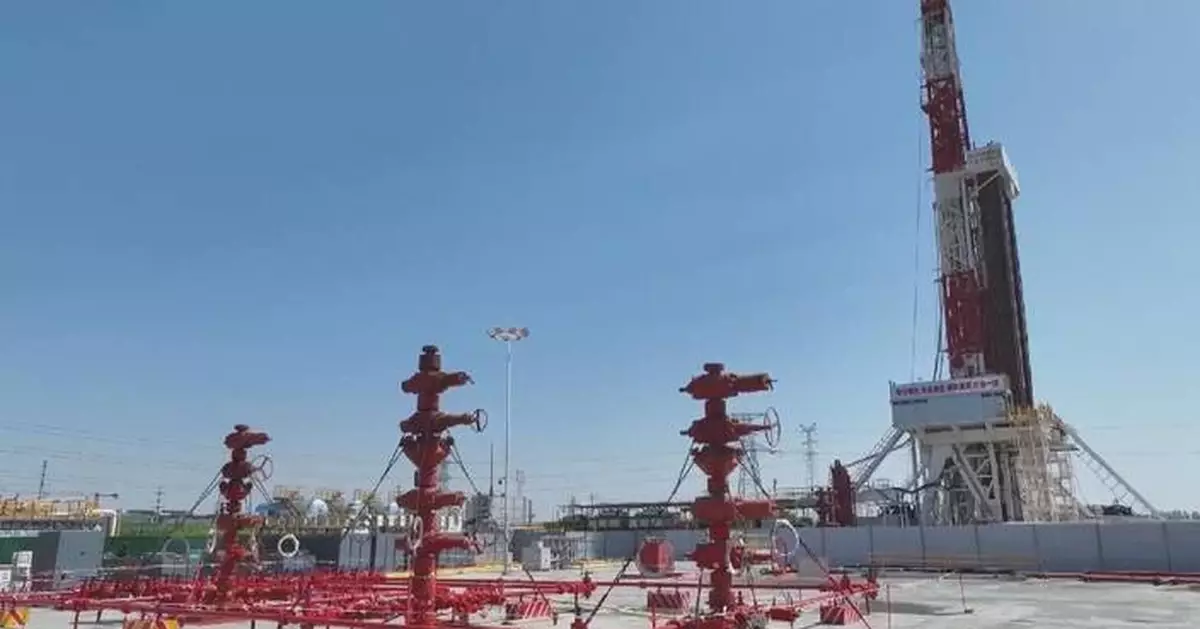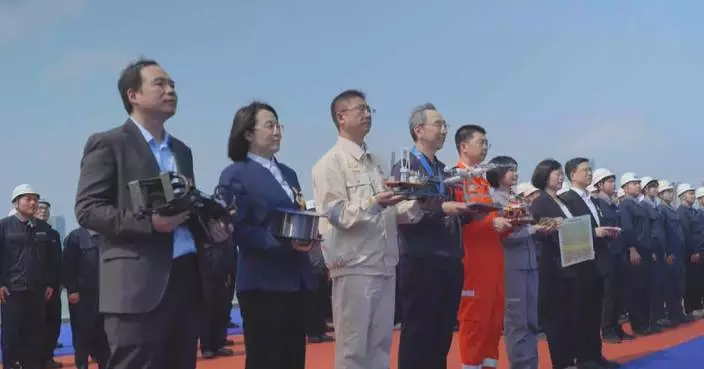China Petrochemical Corporation (Sinopec Group), the country's largest oil refiner, has announced that its Shengli Oilfield, driven by technology breakthroughs, has set a new record for single-well daily shale oil production in China.
A total of 94 horizontal shale oil wells have been built in the 7,300-square-km Jiyang shale oil national demonstration zone owned by the Shengli Oilfield in east China's Shandong Province since it was established two years ago, among which 36 wells have achieved peak daily oil production exceeding 100 tonnes, with a maximum of 262.8 tonnes for a single well, the Science and Technology Daily reported on Sunday.
The achievements were made with the driving force of technology innovations, according to the Sinopec Shengli Oilfield.
Shale oil mainly refers to liquid hydrocarbons trapped in formations of shale rock that can be extracted for refining. It is often found in organic-rich shale and thin interlayers of carbonate rocks, sandstones, and siltstones.
China has abundant shale oil resources, but they are mainly continental shale oil, making exploration and production difficult.
Compared with the shale oil reserves in North America, those in Jiyang are buried deeper, somewhere between 3,000 and 5,500 meters, and have lower maturity, posing a series of challenges to exploration and development.
The technology innovation team of the Shengli Oilfield overcame difficulties in exploration such as high temperature, high pressure, and simultaneous seepage in shale oil reservoirs.
They have developed a fast drilling technology centered on synthetic-based drilling fluid systems, enabling efficient drilling of horizontal wells with depths exceeding 3,300 meters and horizontal sections longer than 2,000 meters, thus reducing the drilling cycle from 133 days to 29.5 days.
"We have successively deployed a number of systematic coring wells. Based on the study of core shale samples buried tens of thousands of meters deep, we have conducted 150,000 indoor experiments, and made breakthroughs in more than 40 national and provincial-level research projects, uncovering the enrichment mechanisms of Jiyang shale oil and initially clarifying the patterns of shale oil accumulation and high production in Jiyang," said Jiao Hongyan, manager of the Shale Oil Project Department at Sinopec Shengli Oilfield.
It is estimated that the shale oil resources in Jiyang amount to 10.5 billion tonnes. The Jiyang demonstration zone, the third of its kind in China following the ones in northwest China's Xinjiang and Daqing in the northeast, has reported a daily oil production of 1,600 tonnes and a cumulative oil production surpassing 800,000 tonnes.

Tech breakthroughs bring record high shale oil production in China
U.S. tariffs on Cambodia, which were set at 49 percent, have sparked concerns among the Southeast Asian country's key export industries such as garment manufacturing amid the ensuing economic uncertainties.
On April 2, U.S. President Donald Trump announced the 49 percent "reciprocal tariff" on goods imported from Cambodia, the highest among all countries. Days later, the U.S. reduced the so-called "reciprocal tariff" to 10 percent for 90 days, offering a window period to Cambodia for negotiations with it.
Cambodian businesspeople say the tariffs have the potential to wreak havoc on the country's manufacturing sector, which, according to data from the World Bank, makes up around a fifth of the country's GDP.
"For U.S. manufacturers, definitely, there will be a big impact. If manufacturers are focusing on U.S. products, they are now in the middle. They don't know what they should do at the moment because the tariff now from Cambodia to the U.S. is actually quite high," said Dr. Ben Li, a Hong Kong investor in Cambodia and Chairman of the Cambodia Chinese Commerce Association.
Nevertheless, Li sees the tariff hike as an opportunity to export more Cambodian goods to the European Union, where a majority of Cambodian exports enjoy duty-free status.
"I always say there will be a light (at the end of the tunnel.) Even now, the U.S. tariff is so high, it's going to be so high after 90 days, we don't know. But, there's still a big market to Japan or to the European Union. There's still a big opportunity there," he said.
The Cambodian investor also believes the development of major infrastructure projects will help support Cambodia's economy.
"Especially the new canal and then the new airport, and the railways which connect to China. I believe once the logistics and infrastructure are built up, it can help the whole country's economy. By reducing the transportation costs, it can also mitigate the tariff costs," he said.
Cambodia and the U.S. held their first tariff negotiations on April 16, with more expected to follow. Local experts said the stakes are high for the country's workers.
"If this negotiation fails, there will be a significant impact. It will include the garment and travel goods sector. These sectors consist of about 1,068 factories and 930,000 workers. The income generated from these sectors is about 3 billion dollars per year. So it would significantly impact Cambodia's economy, jobs and incomes," said Chey Tech, a socio-economic research and development consultant from Dynamic Alliance Consulting.
Despite the potential risks, Tech expressed his optimism about a positive outcome, citing Cambodian Prime Minister Hun Manat's letter to Trump on April 4.
"The Prime Minister's letter confirmed that Cambodia would reduce the tariff rate for U.S. goods to 5 percent. Second, Cambodia is the least developed country. Third, Cambodia produces goods that the developed countries won't produce. We asked whether the U.S. would be able to produce these low-cost products. It cannot," said Tech.
In 2024, Cambodia exported goods of 9.9 billion dollars to the U.S., making it the country's largest market, accounting for 37 percent of Cambodia's total exports.

49-percent US tariffs sparks worry among Cambodia's key export industries





















































